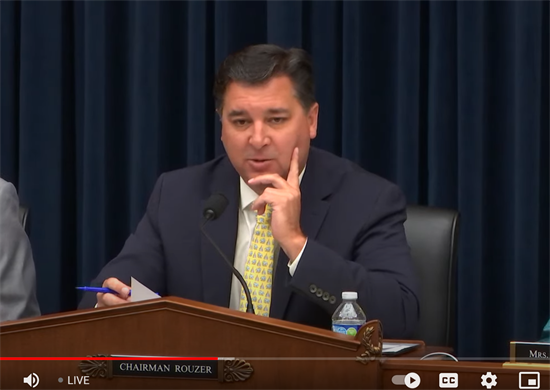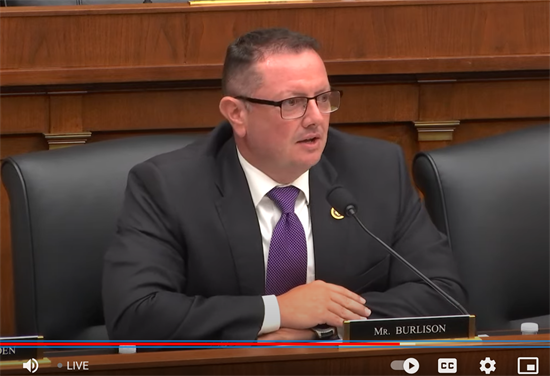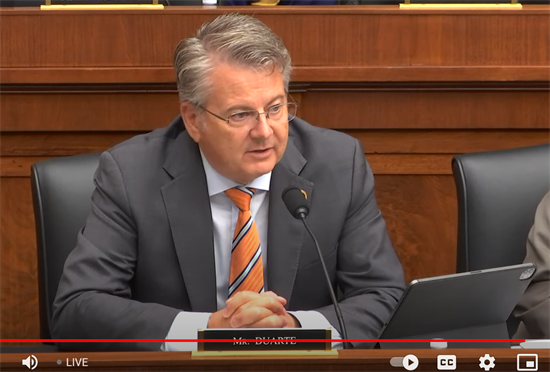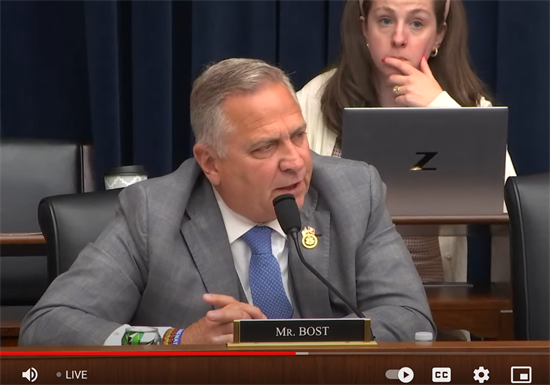Press Releases
Hearing Highlights Ongoing Struggles of States, Farmers, Home Builders & Others with Administration’s WOTUS RuleWitnesses representing the nation’s farmers, home builders, and the State of Alaska today testified that stakeholders and regulated communities across the country continue to struggle with regulatory inconsistency and a lack of transparency from the Environmental Protection Agency (EPA) and the U.S. Army Corps of Engineers (Corps) on what constitutes a “water of the United States” (WOTUS) under the Clean Water Act. This uncertainty and the resulting economic burdens remain even after the U.S. Supreme Court clearly ruled in Sackett v. EPA that key principles underpinning the Biden Administration’s original WOTUS rule exceeded federal regulatory authority under the Clean Water Act. Just over a year ago, the Administration released its inadequate revision of the unconstitutional WOTUS rule, which failed to appropriately reflect the Court’s Sackett decision and caused further confusion amongst the regulated community. Water Resources and Environment Subcommittee Chairman David Rouzer (R-NC) noted at the opening of today’s hearing that federal regulations should be simple and easy to follow, adding that “There is no greater example of bureaucratic overreach than the nightmare of complying with and understanding the definition of a ‘water of the United States’.” Rouzer called for a balanced approach to environmental protection and economic development – a “critical balance that protects the environment without unnecessarily hampering our economy and private property rights. To achieve this, we must also balance the role of the federal government with that of the states and municipalities. The Clean Water Act was never envisioned for the federal government to have control over every ditch and mud puddle, and left room for states to protect their waters as they best see fit.” Rouzer further emphasized that the Administration and the agencies have not made the necessary and appropriate effort to comply with the Supreme Court’s decision and continue to create confusion: “The Administration’s implementation is not in accordance with the Sackett ruling generally, nor is it consistent project to project where JDs [jurisdictional determinations] have been issued.” Witnesses echoed the concerns of Rouzer and other Subcommittee Members today. Alaska Department of Environmental Conservation Commissioner Emma Pokon noted the important role of the states in the federal-state partnership under the Clean Water Act’s framework. “State policymakers can make judgment calls about what level of protection is appropriate for their residents. And states are often better situated to make those judgment calls,” Pokon said in her testimony. “State officials have more complete visibility on circumstances for residents, are more accessible, and may have more nuanced appreciation for unique ecosystem issues and concerns…. But federal agencies are reluctant to trust states; instead, they continue to grope for complete authority over all waters…. Federal policymakers must remember that states exist. We’re here, and we’re ready to do our jobs to protect state waters. Moreover, working with states to achieve a stable regulatory framework would best serve the field of water quality regulation.” When Chairman Rouzer asked Commissioner Pokon to describe the State of Alaska’s experiences in implementing water quality standards post-Sackett, her response was, “essentially that in Alaska, nothing has changed. Nothing.” Watch:
Courtney Briggs of the American Farm Bureau Federation and Chairman of the Waters Advocacy Coalition (WAC) discussed the burdens placed upon farmers by the overreaching WOTUS rule and the Administration’s failure to comply with the Sackett ruling, stating that “the Biden Administration’s interpretation of WOTUS lacks clarity and certainty for landowners and pushes the scope of the federal government’s jurisdictional reach to the outer bounds of what is legal under the Clean Water Act (CWA).” Briggs continued: “The agencies’ failure to provide clear direction to the public is creating significant uncertainty on the ground and delaying important projects. It is worth noting again that landowners need clarity from the agencies on how they are interpreting and implementing the rule because the CWA carries severe civil and criminal penalties for even negligent violations. Landowners can be fined up to $64,000/per day or receive jail time for any CWA violations. These penalties can devastate small businesses, so landowners must understand how this rule is implemented. Leaving them in the dark will only open them up to unknowingly violating the law. Due to the agencies’ veil of secrecy, landowners are denied their constitutional rights of due process and fair notice.” Rep. Eric Burlison (R-MO) raised concerns about a lack of transparency, and pointed out that guidance issued by federal agencies is often functionally treated as a rule by the agencies. When asked to comment, Briggs testified that WAC members filed a Freedom of Information Act (FOIA) request for the guidance the Corps of Engineers is providing its district offices to guide implementation of the WOTUS rule. However, the response WAC received to the FOIA request redacted this critical information. Watch:
Rep. John Duarte (R-CA) asked Briggs about the difficulties for farmers now in getting an approved jurisdictional determination (AJD) from the Army Corps of Engineers, so that they know whether the federal government is claiming jurisdiction over their property. Briggs testified that some Corps districts are not prioritizing, or even issuing, AJDs, instead pushing farmers into simply conceding that their property is subject to the CWA and requires a permit, without the Corps that showing their work is in compliance with Sackett. Watch:
Vincent E. Messerly, P.E., President of the Stream and Wetlands Foundation and testifying on behalf of the National Association of Home Builders, spoke to project delays and impacts on builders’ ability to provide more affordable housing options for Americans. He said, “The challenges surrounding WOTUS permitting become stark when you consider the time and cost to obtain a CWA section 404 permit. A 2002 study found that it takes an average of 788 days and, adjusted for inflation, $471,836 to obtain an individual permit and 313 days and $50,233 for a ‘streamlined’ nationwide permit. Over $1.7 billion is spent annually by the private and public sectors obtaining wetlands permits.” Messerly added, “If home builders and the residential construction industry cannot understand the regulatory framework under which to operate, how can we expect to achieve housing production to address our national affordability crisis? Safeguarding the environment and building homes do not have to be mutually exclusive.” Rep. Mike Bost (R-IL) shared similar concerns about the economic impacts of the WOTUS rule and government overreach, and asked Messerly for real-world examples of these costs and how it impacts projects. Watch:
Click here for more information from today’s hearing, including video, witness testimony, and Chairman Rouzer’s full opening statement. |










